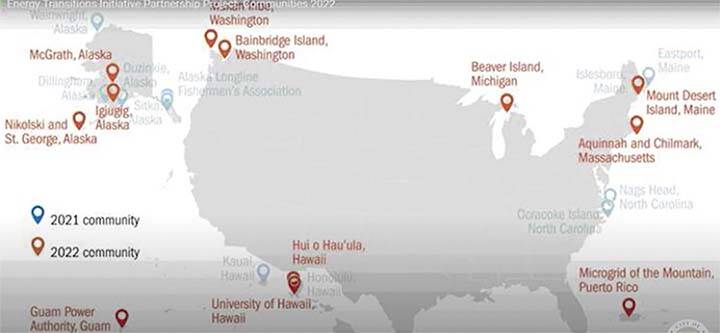Bainbridge Island is being energized by the U.S. Department of Energy.
City manager Blair King announced last Friday that the city is one of 12 new communities named to the Energy Transitions Initiative Partnership Project. While there is no direct funding involved for projects, it does come with expert resources available to help BI have 100% renewable power by 2030.
BI, specifically, will get expert help with hydropower-marine, renewable energy planning, solar and storage. The goal is to rely on local resources to eliminate the need for imported fuels. It will also provide clean energy for the future, make reliable energy more affordable and help with declining infrastructure.
Vulnerable rural areas, such as in Neah Bay with the Makah Tribe, also are part of the program, which started last year with 11 communities. Resources will help improve electric infrastructure, energy costs and resiliency during natural disasters and outages. Communities will drive the discussion because they know their needs, the DOE website says.
Partner networks include energy transitions, geothermal, solar, water, wind and energy offices. Giving technical assistance will be tribal, regional and national labs. Resources include a playbook, data snapshots, energy modeling, analysis tools, electrification of transportation on islands and a microgrid design guidebook.
Communities selected have limited access to energy systems. Many are on islands isolated from mainlands by waterways, and not connected to large transmission systems that result in a lack of power quality and reliabililty.
Success stories like the one in New Orleans are the model. After destructive hurricanes, it was decided that NOLA needed its own microgrid powered by renewables to keep the lights on. Such microgrids are used often on places like colleges, military installations and prisons.
Standalone generation plants are powered by generators, batteries and renewables like solar power and small wind turbines. They operate in isolation when needed, the DOE website says.
Goals are: Prioritize community energy values, goals, challenges and opportunities; Identify and advance the ability to implement strategic, whole-systems solutions; and Foster high-impact, replicable community energy transition approaches.



